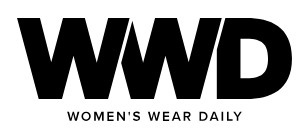
By: David Moin | Link to article
Jennifer Foyle, president and executive creative director of AE and Aerie, tells WWD that a better balance between fashion and essentials and a “healthy” customer file fueled growth last quarter.
American Eagle Outfitters Inc. posted first-quarter top, fueling confidence it’s on the right course with the strategic roadmap outlined earlier this year.
Net income in the first quarter ended May 4 rose to $67.75 million from $18.45 million in the year-ago period.
Operating income rose to $78 million, compared to GAAP [generally accepted accounting principles] operating income of $23 million and adjusted operating income of $44 million last year.
Total net revenue of $1.14 billion rose 6 percent from $1.08 billion in the year-ago period.
“There are two different stories here. We have been repositioning the brands, amplifying American Eagle as well as Aerie. Both brands exceeded expectations,” Jennifer Foyle, president and executive creative director of AE and Aerie, told WWD. She also cited the “health” of the retailer’s customer file. “There’s been nice growth in new customers and in re-engaging customers, particularly on the AE side.”
Secondly, “It’s the magic of product,” Foyle said. “Women’s at AE in particular saw growth. Jeans are coming back, where we will definitely have nice tailwinds into the back half.”
Overall, “We really remixed the business to be more balanced between fashion and basics, and to have the right fashion at the right time. We’re doing our testing and scaling, which we do very well.”
At Aerie, fleece is still a winning category, she added. “We are also introducing new categories and seeing them ramp up, one being sleepwear.”
At Offline, the athletic offshoot brand of Aerie, leggings are the go-to accessory, Foyle said. Offline was introduced as the business came out of the pandemic, and has begun layering new categories into that business.
American Eagle Outfitters’ strategic roadmap, called “Powering Profitable Growth” was unveiled last March. It targets mid-to-high teens annual operating income expansion on 3 to 5 percent annual growth revenue, and about a 10 percent operating margin over the next three years. AEO hopes to add more than $700 million in sales over that stretch, pushing revenues up from $5.26 billion last year to possibly $6 billion. The strategy focuses on what executives describe as “amplifying” American Eagle and its denim business and expanding adjacent categories, fueling Aerie’s expansion, and accelerating activewear growth via Offline. The plan also calls for greater financial disciplines and “leveraging best-in-class” operating capabilities.
“This is about a marathon, not a sprint,” Foyle said. “We are leaning into what we do best — quality at value prices. But we do see opportunities to increase AURs (average unit retail prices) in select categories we are winning on.”
Foyle emphasized that growth last quarter was spurred by “well-rounded assortments” at American Eagle, meaning a better mix of fashion and essentials. She was also bullish on American Eagle’s new store design, noting that about 100 stores will have been renovated by the end of the year. Meanwhile, Aerie is testing a new store design at its Tysons Corner, Va. store.
“Momentum continues into second quarter,” Mike Mathias, executive vice president and chief financial officer, told WWD. “Customers are responding very well to our brands and assortments.”
Asked about industry-wide impressions that consumers are holding back on discretionary spending, impacted by inflation and economic uncertainties, he said, “We’re not seeing any impact from some of that sentiment.”
Mathias did say the company is maintaining a cautious outlook for the second half, based on lapping some positive results from a year ago, the 52-week year versus 53 weeks in 2023, and Fed policy on rates.
Mathias said peak selling for back-to-school happens in August, and that will provide “proof points” for getting a clearer read on how the second half could transpire. Post Labor Day through mid-September, there could be another lift in back-to-school selling, due to what he said was the season “elongating with a little bit of wear now.” Some students tend to purchase apparel after they return to school and see what other students are wearing.
In other results at AEO, store revenues rose 4 percent and digital revenue increased 12 percent.
By division, Aerie’s revenue of $373 million rose 4 percent, with comp sales up 6 percent. American Eagle’s revenue rose 8 percent to $725 million, with comp sales growing 7 percent. AEO also operates the Todd Snyder brand.
“Our strong first quarter results underscore the power of our iconic brand portfolio and demonstrate great progress on our ‘Powering Profitable Growth’ strategy,” Jay Schottenstein, AEO’s executive chairman and chief executive officer, said in a statement Wednesday. “We achieved record revenue, amplifying American Eagle’s and Aerie’s leading market positions and opportunity in casual apparel. We continued to offer exciting merchandise collections and customer activations, providing compelling in-store and digital shopping experiences. This, combined with actions to optimize our operations and drive efficiencies across the organization, contributed to meaningful profit expansion, which was ahead of expectations.
“As I look forward, I remain confident in our ability to deliver on our plans for 2024 and beyond,” Schottenstein continued. “We have significant runway across our brands and we continue to execute with discipline as we drive our business to deliver sustained, profitable growth and returns to shareholders.”
For fiscal 2024, management continues to expect operating income in the range of $445 to $465 million. This reflects revenue up 2 to 4 percent to last year, including an approximately one point headwind from one less selling week due to the retail calendar shift.
For the second quarter, management expects operating income in the range of $95 to $100 million. This reflects revenue up high-single digits, including about $55 million positive impact from the retail calendar shift.
